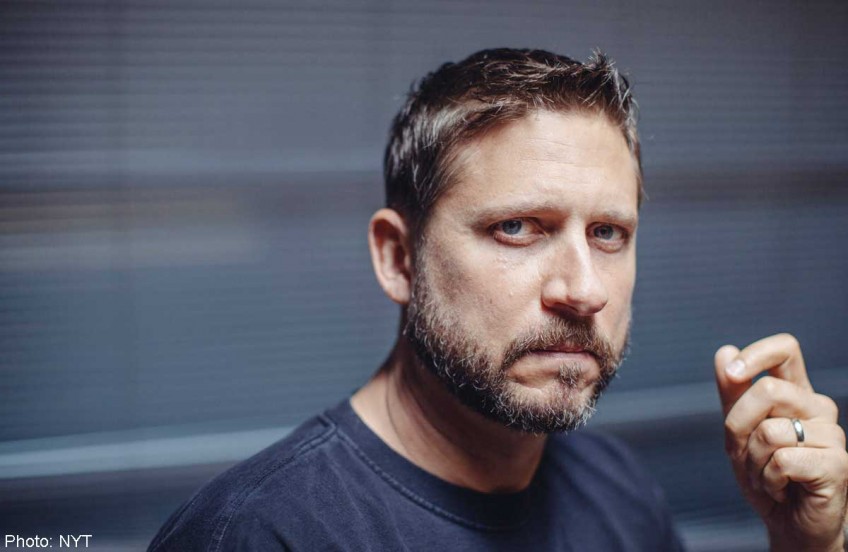Honest look at war

Los Angeles - In the first minutes of writer-director David Ayer's Fury, about American soldiers slogging through Europe in the final days of World War II, Brad Pitt, as tanker Don Collier, slides his knife behind the eye of a German lieutenant.
"Piercing his brainpan with a CRACK," is how Ayer's screenplay describes the move. (In Dolby Digital sound, it will be a very loud crack.) Pitt then calmly wipes his blade clean on the German's uniform.
The Good War this is not.
In what promises to be one of the most daring studio movies in an awards season that will bring several World War II films, Ayer, Pitt and producers backed by Sony Pictures Entertainment are poised to deliver what pop culture has rarely seen. That is, a relentlessly authentic portrayal - one stuntman was run through with a bayonet on the set - of the extremes endured, and inflicted, by Allied troops who entered Germany in the spring of 1945.
Quentin Tarantino's Inglourious Basterds, which also starred Pitt, was brutal but surreal. Few believed that a real-life counterpart to his blood-crazed Lieutenant Aldo Raine had collected Nazi scalps by the hundred.
The first 20 minutes of Steven Spielberg's Saving Private Ryan came much closer to what Ayer calls the war's "ground truth." But little in its portrayal of slaughter at Normandy hinted at what some American soldiers would do less than a year later in their final push to victory - yes, they executed prisoners and killed armed children.
Ayer, a studio writer and indie film director, had been meditating for years on the Fury screenplay, but he wrote it in a burst about 18 months ago. "It sort of exploded out," he said. "I wrote it for me." He said it was intended both as a personal journey and as a correction to the pop cultural record.
The time also seemed right for an honest look at those who were fighting and dying in ferocious encounters even as the German surrender was imminent, he said. Their problem is that of Pitt's character, known as Wardaddy, and the four tankers - portrayed by Logan Lerman, Shia LaBeouf, Michael Pena and Jon Bernthal - whom he has pledged to keep alive, Ayer said. "Nobody wants to be the last man to die in the war."
In the story, the crew of a Sherman tank called Fury have fought their way from Africa to Normandy, across the Rhine and into Germany. Ragged and worried, they can see the war's end. But they can't quite reach it.
As the movie opens, they are preparing to scrape the remains of a headless buddy from the bow gunner's seat. "I sure didn't keep him alive," Pitt mutters. Much of what his Wardaddy does may shock viewers who have rarely seen ugliness in the heroes of World War II.
Don Evans, a World War II tank gunner who advised Ayer, now cautions that some scenes in Fury are more extreme than what he witnessed in 28 months overseas. "I don't recall anyone having to kill a buddy," he said in a phone interview.
The film, which cost about US$80 million (S$100 million), was mainly shot in Britain. Access to tanks was a prime consideration: Vintage Shermans were more readily available there.
For Amy Pascal, chief executive of Sony's film group, Fury becomes the latest in a bold series of Oscar season bids that in recent years have included The Social Network (2010), Zero Dark Thirty (2012), American Hustle (2013), Captain Phillips (2013) and, with Pitt, Moneyball (2011).
Each, in its way, was a tough-minded film that pushed to the edge of its particular genre. None captured the big prize, a Best Picture Oscar.
But all did what Ayer may do with Fury: jolt viewers into a fresh, and fractious, conversation about the movies and ground truth.
Fury opens here on Dec 4.

This article was first published on August 2, 2014.
Get a copy of The Straits Times or go to straitstimes.com for more stories.